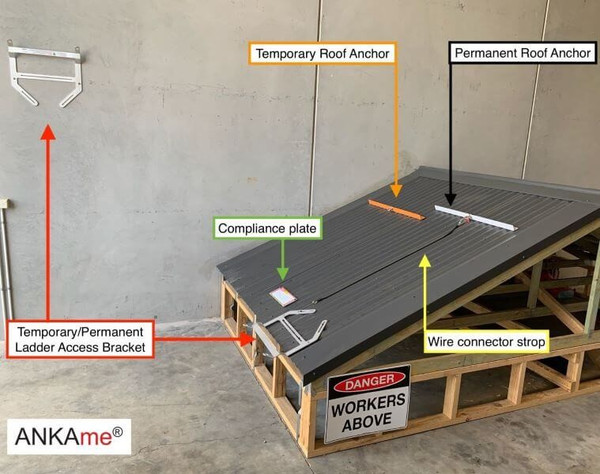When it comes to roof safety working at heights, roof safety hazards and work or repairs on rooftops, access and safety should be your top priority. Sometimes people skip preventive measures because it takes too much time, effort or money. There are various safety issues that one must adopt to avoid serious injury or death.
It’s necessary to identify serious accident-prone risks before performing work on rooftops. You can follow common safety steps to control these rooftop hazards.
Let’s dive in!
Fall Hazard:
Fall Hazard is when an unforeseen loss of balance or bodily support results in a fall. It can be caused by the following:
1.While climbing a faulty ladder
2.When a defective ladder falls down under the weight of a roof worker carrying tools.
3.When roof worker is working at the edge of a roof
Therefore you must consider the following things before starting the work.
1.Are you using the right equipment?
2.Will the structure or access point be able to support the weight?
3.Are you using some form of edge protection, e.g. roof anchor points - guard railing - scaffolding?
Make a checklist and assess each point to understand the level of edge protection and access required to avoid the fall hazard.
Improper Handling of Power Tools:
Roof workers must know the proper use of power tools. If they are improperly used at heights, it can cause serious injuries to the worker. The worker may slip or fall from a height. Use correctly working power tools at work and train your staff to use them properly
Electricity Hazards:
The fatalities that occur through electrical hazards in the construction industry accounts for over 40 percent. People who are working near power lines on rooftops are more likely to have accidents. Inappropriate use of electrical devices can cause burns, shocks, fires and even death. Check and identify all the possible causes of electrical hazards and take suitable steps to avoid them, prior to starting work.
Intense Heat:
It’s pretty difficult to work in intense heat which can be caused by extreme weather. Protect you and your workers by identifying the dangers caused by intense heat to help reduce accidents.
Below Are The Safety Tips For A Roof Worker:
Clean the worksite and identify the hazards: It’s everyone’s responsibility to ensure that the work area is clean, organized and blocked from a passer-by. Make a checklist of danger-prone areas within the work area. Dangerous areas on the roof and ground are as follows:
- Power lines
- Perilous access points
- Roof skylight spot
- On site house-keeping and working hazards
During extreme temperatures, workers must avoid working on the roof. The risk of falling from a roof is high during rain or snow. If the temperature is high, there’s greater risk of fatigue or stroke.
Proper Use of PPE
A roof anchor point and roofing safety harness is an integral part of the personal fall protection system. Personal protective equipment includes a roof anchor point, harness, lanyard, rope, etc. Be sure to select the appropriate equipment according to your work situation.
Arrange a Pre-start “Safety Tool Box Talk” Before Work Commences:
Have a 5-10 minute pre-start talk with all workers before starting work on the rooftop. Discuss common hazards so that work becomes easier. Also assessing the status of the work area and verifying proper safe work zone areas and no-go work zone areas, helps to encourage the team to follow the correct safety procedures. You can discuss every issue and record all the safety conversations.
Properly Stabilize The Ladder Before Use:
It is everyone’s job to ensure that the ladders used for the work are in good working order. You also need to check if you need any repairs or replacement of the ladder and ensure the ladder is connected to a stable location and connection point at the roof. This can prevent fatal accidents or injuries.
Use Visible Warning Signs:
People can be stopped by using warning signs around the work area. You should always be aware of people working on the roof in the vicinity, using warning signs. It helps to avoid serious injury and death at the worksite.
You are now aware of the rooftop safety hazards and important safety tips in your workplace. Implement these safety tips to improve rooftop safety at the job site.
ANKAme are fall protection safety experts in Australia. We are passionate about our work and your safety.
View or purchase ANKAme’s wide range of safety equipment.

